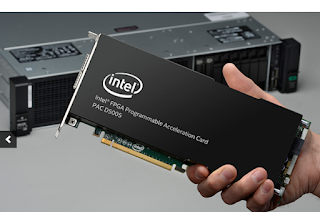Amdocs and Microsoft are expanding their alliance to help communication service providers (CSPs) with differentiated, cloud-based services. Amdocs and Microsoft will collaborate across several domains, including Data and AI, NFV and virtualized networking, IoT (including eSIM) and Media.
Under the collaboration, SES, a global satellite operator, will be the first to deliver virtual network services, such as SD-WAN, orchestrated and managed using Amdocs NFV Powered by ONAP on Microsoft Azure.
 “As the communications and media industries merge, CSPs are jockeying to bring fresh, new offerings to their brand to retain and grow their customer base and gain market share,” said Gary Miles, chief marketing officer, Amdocs. “With today’s expanded agreement, CSPs can now offer a one-stop shop of new and differentiated cloud services to drive growth, stickiness and value-add, while also streamlining operations, improving service agility and reducing complexity.”
“As the communications and media industries merge, CSPs are jockeying to bring fresh, new offerings to their brand to retain and grow their customer base and gain market share,” said Gary Miles, chief marketing officer, Amdocs. “With today’s expanded agreement, CSPs can now offer a one-stop shop of new and differentiated cloud services to drive growth, stickiness and value-add, while also streamlining operations, improving service agility and reducing complexity.”
Bob De Haven, general manager, worldwide media & communications industries at Microsoft Corp. said, “Amdocs and Microsoft have been working together for several years to enable and develop services to accelerate CSPs’ transformation to the cloud. Through this expansion of our work together, Microsoft and Amdocs will collaborate on new work across several of the industry’s most important growth drivers, including expanding into the media and entertainment business, leveraging artificial intelligence and evolving to open, cloud-based services.”
Amdocs also announced that its scalable, Hadoop-based data management platform and self-service visualization and reporting solution is now available hosted on Azure. CSPs can now bring real-time data from multiple sources, both cloud-based and on-premises, into a communications industry-specific data model based on best practice, prebuilt reports and visualization capabilities.
http://www.amdocs.com
MEF18 Proof of Concept, 29 - 31 Oct - Transformation in Action: Harmonizing Delivery of Intent-Based Networks & Services.
Under the collaboration, SES, a global satellite operator, will be the first to deliver virtual network services, such as SD-WAN, orchestrated and managed using Amdocs NFV Powered by ONAP on Microsoft Azure.
 “As the communications and media industries merge, CSPs are jockeying to bring fresh, new offerings to their brand to retain and grow their customer base and gain market share,” said Gary Miles, chief marketing officer, Amdocs. “With today’s expanded agreement, CSPs can now offer a one-stop shop of new and differentiated cloud services to drive growth, stickiness and value-add, while also streamlining operations, improving service agility and reducing complexity.”
“As the communications and media industries merge, CSPs are jockeying to bring fresh, new offerings to their brand to retain and grow their customer base and gain market share,” said Gary Miles, chief marketing officer, Amdocs. “With today’s expanded agreement, CSPs can now offer a one-stop shop of new and differentiated cloud services to drive growth, stickiness and value-add, while also streamlining operations, improving service agility and reducing complexity.”Bob De Haven, general manager, worldwide media & communications industries at Microsoft Corp. said, “Amdocs and Microsoft have been working together for several years to enable and develop services to accelerate CSPs’ transformation to the cloud. Through this expansion of our work together, Microsoft and Amdocs will collaborate on new work across several of the industry’s most important growth drivers, including expanding into the media and entertainment business, leveraging artificial intelligence and evolving to open, cloud-based services.”
Amdocs also announced that its scalable, Hadoop-based data management platform and self-service visualization and reporting solution is now available hosted on Azure. CSPs can now bring real-time data from multiple sources, both cloud-based and on-premises, into a communications industry-specific data model based on best practice, prebuilt reports and visualization capabilities.
http://www.amdocs.com
MEF18 PoC - AT&T on Intent-Based Networks & Services
MEF18 Proof of Concept, 29 - 31 Oct - Transformation in Action: Harmonizing Delivery of Intent-Based Networks & Services.

















